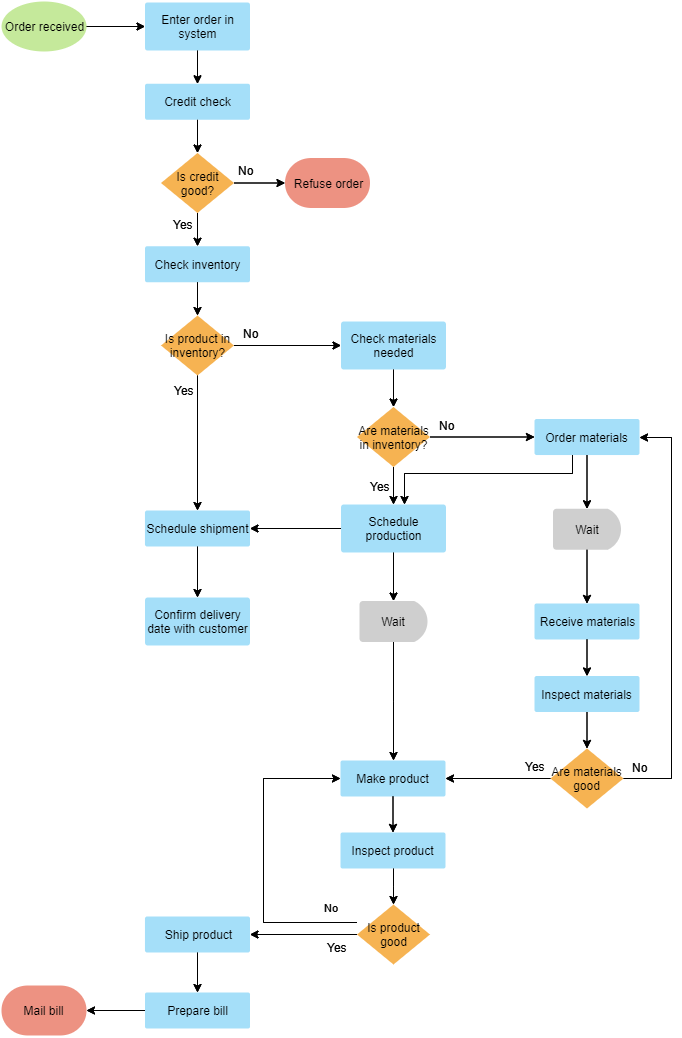A diagramu przepływujest narzędziem, które pozwala rozłożyć każdy proces na poszczególne działania i pokazuje logiczne relacje między nimi. Większość ludzi
Continue reading
Uczenie się jednej nowej rzeczy każdego dnia


A diagramu przepływujest narzędziem, które pozwala rozłożyć każdy proces na poszczególne działania i pokazuje logiczne relacje między nimi. Większość ludzi
Continue reading
Pierwszym krokiem w definiowaniu nowego produktu, usługi, procesu lub systemu jest określenie wymagań, tj. konkretnych wymagań funkcjonalnych lub niefunkcjonalnych. Wymagania
Continue reading
A flowchart is a graphical representation of an algorithm, workflow, or process, with different types of boxes representing different types of steps, and arrows connecting every two steps. This representation facilitates the illustration of solutions to known problems. Flowcharts are widely used to analyze, design, document, and operate processes or procedures in many fields.
Continue reading
A flowchart is used to show the successive steps in a process. Such diagrams use a series of interrelated symbols to map the entire process, making the process easy to understand and helpful in communicating with others. Flowcharts can be used to explain the workings of a complex and/or abstract process, system, concept or algorithm. Flowcharting can also help to plan and develop processes, or improve existing processes.
Continue reading
UML State machine diagram and activity diagram are both behavioral diagrams but have different emphases. Activity diagram is flow of functions without trigger (event) mechanism, state machine is consist of triggered states.
Continue reading
Software engineering focuses on the development of software products. it is a systematic, disciplined, and quantifiable approach to software development, operation, and maintenance; That is, engineering to software applications.
Continue reading
The context diagram shows the system considered as a single high-level process, and then shows the relationship of the system to other external entities (systems, organizational groups, external data stores, and so on). Another name for a context diagram is a context-level data flow graph or 0-level DFD.
Continue reading
One of the effective way to solve a complex problem is to break it down into simpler sub-problems. You start by breaking down the whole task into simpler parts. Step-by-step refinement is essentially a decomposition of the system to gain insight into the subsystems that make up the system, known as the top-down decomposition method.
Continue reading
Hexagonal architecture diagram is an architectural pattern used in software design aiming at creating loosely coupled application components. This approach is an alternative to the traditional layered architecture. It is one of the many forms of DDD (Domain Driven Design Architecture).
Continue reading
CMMN is a graphical notation used for capturing work methods that are based on the handling of cases requiring various activities that may be performed in an unpredictable order in response to evolving situations. Using an event-centered approach and the concept of a case file, CMMN expands the boundaries of what can be modeled with BPMN, including less structured work efforts and those driven by knowledge workers. Using a combination of BPMN and CMMN allows users to cover a much broader spectrum of work methods.
Continue reading